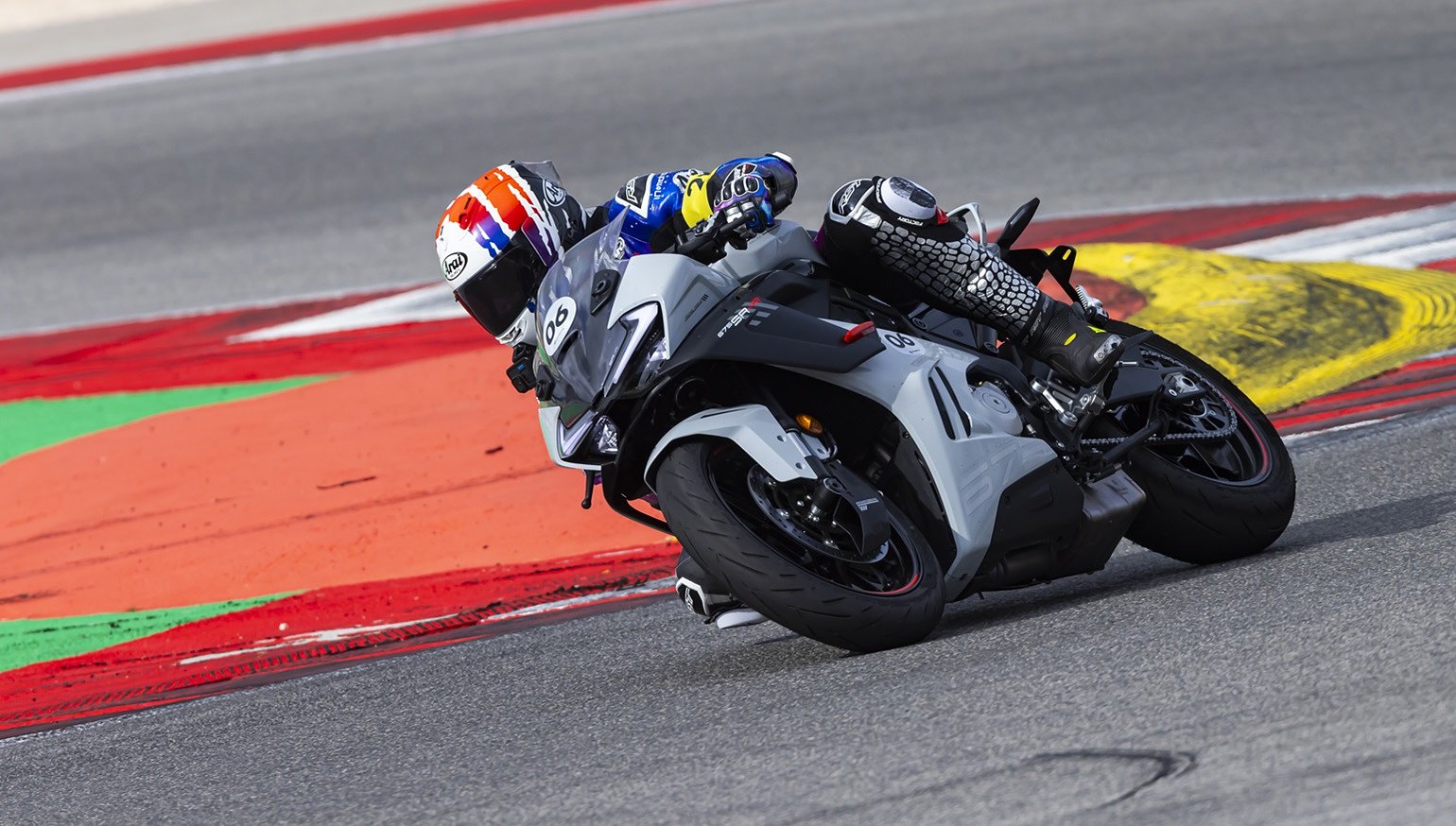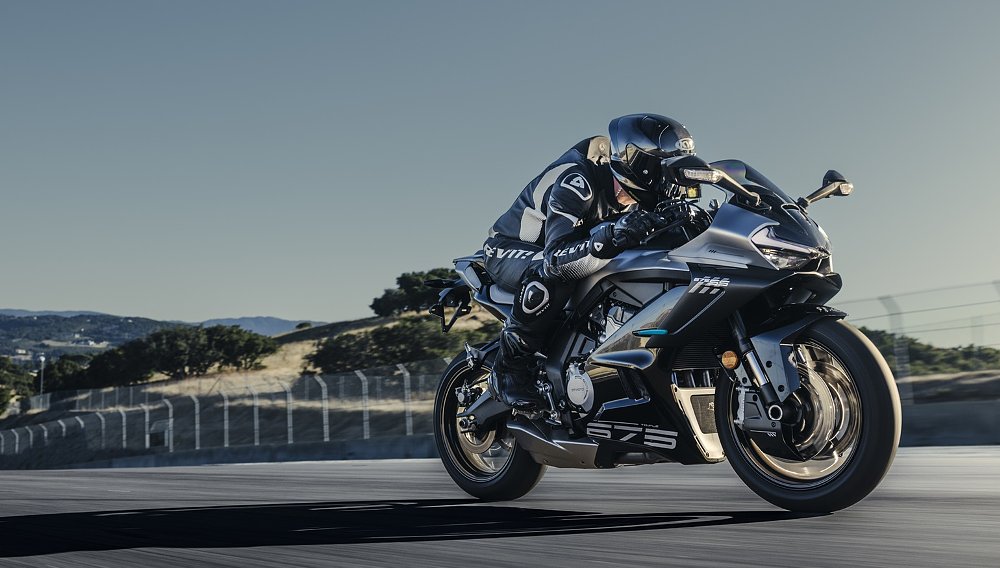What do you get when Chinese manufacturing and Italian flair are combined? The CFMOTO 675SS, of course. Unveiled halfway through last year, this middleweight sport bike certainly raised a few eyebrows, not only for its bargain price, but snazzy Italian design and decent spec, too.
CFMOTO is, without doubt, the premium Chinese moto manufacturer, and a good look around the 675SS — designed in Italy by CFMOTO's agency — backs up this claim. There are a few obvious signs of why this bike costs just $7,999, yet there's also KYB adjustable suspension and standout features like Apple CarPlay, and USB charging to ensure the youth are happy. And belittle its price tag.
We were riding the Euro version of the three-cylinder 675, called the 675SR-R, complete with 88 horsepower. The version hitting U.S. shores (called the 675SS and how we'll refer to it here) has a dizzy additional two horsepower.
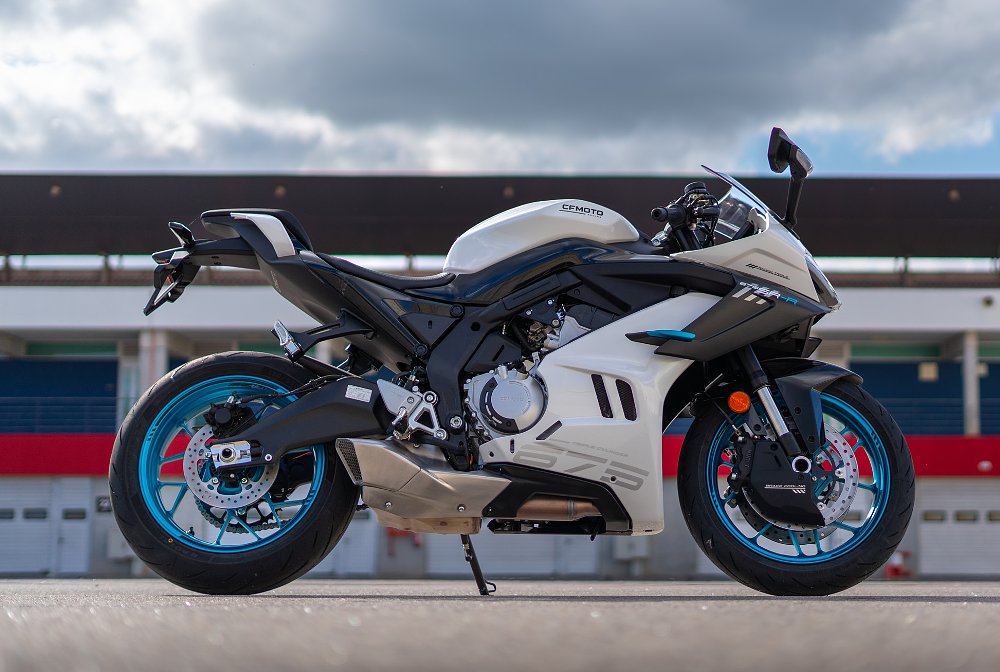
The Algarve International Circuit — otherwise known as Portimão — is not only a fantastic testing facility, it's also a brave one for manufacturers to launch a new motorcycle. Its challenging layout allows gifted bikes to shine but severely punishes any weaknesses, and inviting the world's press to dissect some fresh Chinese meat was certainly the brave option for CFMOTO.
Given the rushed approach to this media event, I didn't straddle the 675SS until we rolled out of pit lane. It's a very relaxed affair, like a late-90s sport-tourer; low seat, vario-esque clip-ons and you're very much in the cockpit rather than on the bike. A hint towards its ability on track? Absolutely not. Aside from a booming triple-cylinder soundtrack, the first thing you're greeted with is the very KTM-looking (I wonder why?!) TFT dash. There are two levels of traction control, which can also be disabled, and ABS that unfortunately has no level of adjustability. But we'll get to that later.
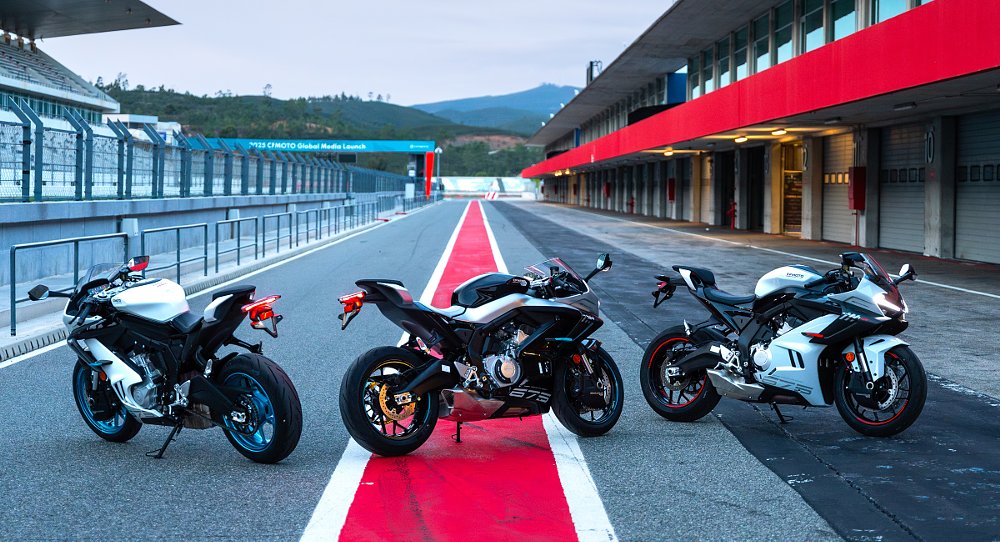
Despite clocking more laps of Portimão than some of the circuits in my native UK, the first session was spent behind a local Portuguese instructor, which allowed me to get comfortable with a few of the SS's idiosyncrasies. For starters, the throttle pick-up from closed to open is snatchy. And that's being kind. We were warned, pre-ride, that there were some "fueling issues." It's more palpable at lower speeds and caught me off guard in the pits a few times, and no doubt it'll become frustrating on the street, but I'm sure the fuel map can be tweaked to suit. I can only assume/hope CFMOTO fell victim to harsh European emission regs and the international model will be peachier.
As hasty as it was to fathom its foibles, the 675SS's highlights were quick to shine through, even at lesser speeds behind the local instructor. This bike feels feathery light and provides confidence to push straightaway, meeting an apex with minimum effort. You point, it shoots, bragging all the handling hallmarks of a bona fide supersport racer as it gobbled up Portimão's rollercoaster format. Granted, the standard fork setting is very soft and there is a lot of weight transfer even without grabbing a handful of brake lever, but I soon realized the core of the chassis was ready to party.
However, it didn't take long to figure out the ground clearance issues. The hero blobs, which CFMOTO staff insisted we ran as a kind of treat (swapping for new ones as soon as they got worn) spent copious amounts of time carving pretty patterns into the asphalt of Portimão. I'm not sure whether the Chinese thought these hero blobs served as welfare protection; they were anything but, causing some nervous moments mid-corner.
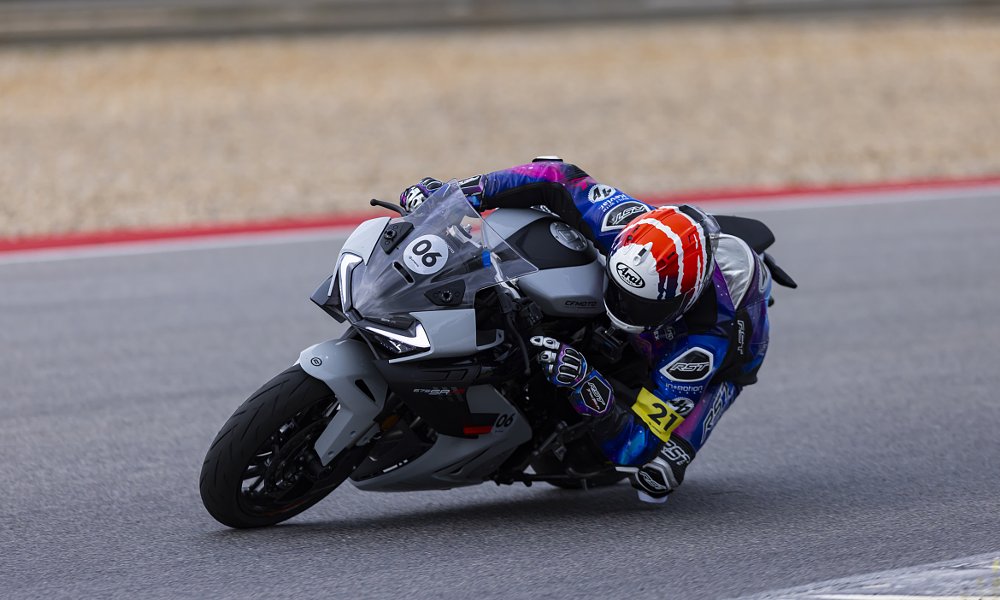
I'd just ridden the 675 NK (the SR-R's naked brother), which uses the same CST (Cheng Shin Tire) dual-compound tires and found myself constantly tucking the front and making sea lion screeching sounds. So I was more than cautious during the opening laps at Portimão. If you, like me, are a bit of a tire tart, then you'll share my trepidation when it comes to unknown rubber. But the CSTs warmed up quicky (we weren't using tire warmers) and were just as quick to provide decent grip. There's no hiding these are street tires, although there's plenty of feedback from the front and I barely got the rear moving throughout the day.
After the sedate pace of the opening session, the second outing was a far more fruitful affair in terms of riding impressions and dynamic ability. Budget connotations aside, the 675 is a super-fun bike to ride hard, and the engine is responsible for a chunk of that. The aforementioned triple sound is highly addictive during any part of the rev range, although riding on track requires a slightly narrower set of working parameters. There's a healthy dose of midrange that ignites at around 6,000 rpm and continues to flourish until 10,000 rpm. Revving anything past that is purely for an eargasm as the engine wheezes to the redline, and you're also entering dangerous territory. If you're male, haven't had kids yet but want to deliver offspring into this crazy world, I would suggest avoiding the SS's rev limiter at all costs. Not only does it creep up unexpectedly, regardless of the dash warning, the savage nature is a real ball-buster and something I've never experienced before.
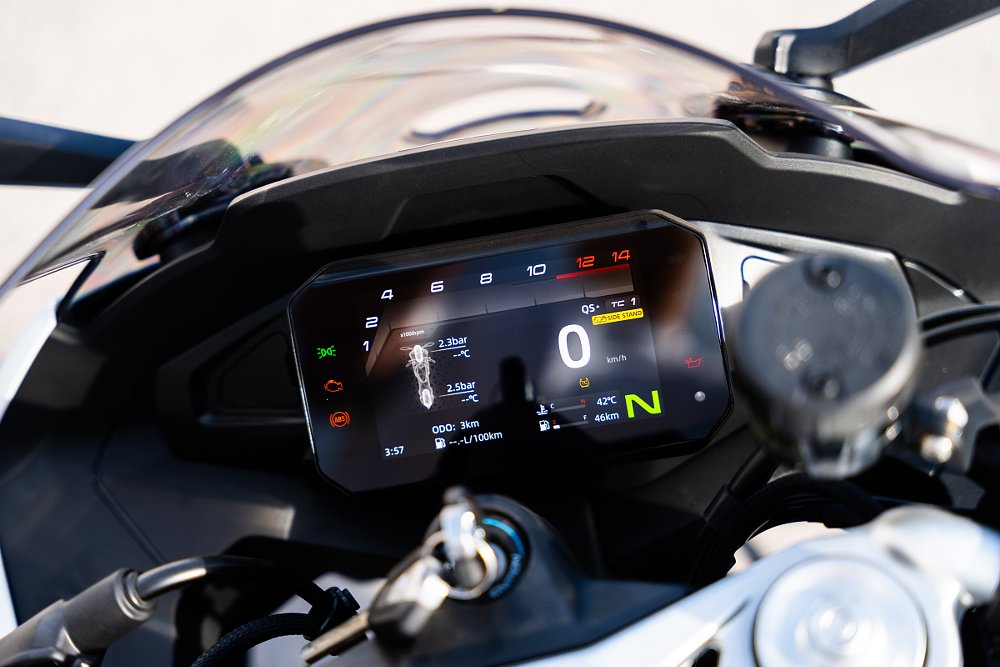
Its lack of horsepower was truly evident across Portimão's finish line. Funneling through the grandstands, I had all the time in the world to prepare for the insane turn one, yet clicking sixth gear was an utter waste of time. It simply wouldn't pull top gear and holding fifth gear for the whole of the straight was the more rewarding option; about five mph more rewarding, to be precise. Although you can rely on the midrange at slower speeds when lap times don't matter, it's still fussy when it comes to gear selection. Besides, it needs shorter gears to help the bike's balance mid-corner and avoid pushing the front tire.
But corner entry is where this CFMOTO struggles, if you’re chasing tenths. The 675SS supposedly comes with a slipper clutch, although its execution is anything but slippery. There's no rear wheel judder, no noisy gear mechanisms, but manual clutch slip during corner entry is a necessity unless you're partial to highsiding before the apex. It's like the engine braking is writing checks the slipper clutch can't cash.
And there's the supposed simple task of applying brake pressure. When, in the safety briefing, the instructor recommends we remove the ABS fuse, you know the system is going to be agricultural, at best. In the name of professionalism, however, I needed to test the ABS's execution. Now, I've sampled some horrendous ABS systems in my 20 years of doing this job, but nothing could prepare me for the SS's frankly dangerous corner entry etiquette. Anything that requires heavy braking activates this "safety" feature, the lever goes rock-hard, and you're hurtling towards the apex (or gravel trap) with far more speed than you'd like. I spent most of the session simply riding around, braking early and utilizing around 50% of the 675's stopping power as the ABS crippled the bike's potential.
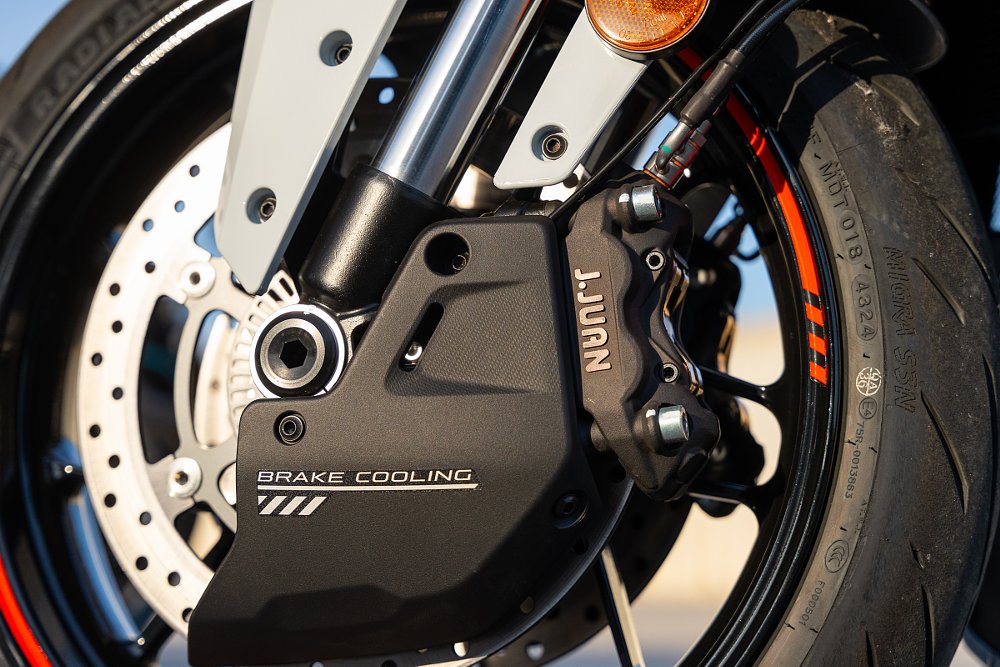
But the third and final session was a true epiphany for the 675 and me. The CFMOTO engineers deactivated the ABS (most likely a fuse, but they wouldn’t say) and it transformed the whole bike. It may be lacking horsepower, but the SS countered with serious corner speed and a newfound fluidity after losing the ABS, joining the dots at Portimão with consummate ease. It also allowed the brakes to unlock their full potential, and I was never left wanting more stopping power.
I'm not going to sit here and claim the aero/wings on a bike with 88 horsepower have any effect other than aesthetic pleasure, but the brake cooling ducts sure do something tangible to keep the J.Juan paraphernalia running cool. Portimão has numerous heavy braking zones and tests the most premium braking setups, and the SS responded with virtually no brake fade or excess lever travel. And that was after a monster 30-minute session.
You might be reading this and thinking, "It sounds like a bit of a dog," but don’t let the negatives in this review tarnish your opinion — or potential buying decision — of the 675SS. A few quick fixes, like an upgrade in rubber and some racier rearsets would transform its potential. The majority of the 675SS's shortcomings were more to do with being chucked into an uncomfortable environment. This isn't an out-and-out supersport racer ready to compete on a grid. It needs too much money and engine tuning to be considered so, and rivals need to be Aprilia RS660s and Triumph Daytona 660s rather than Yamaha YZF-R6s and Kawasaki ZX-6Rs. It's a perfect entry-level track tool to flatter any novice rider and coax them onto greater things, yet it still packs enough to appease more experienced riders.
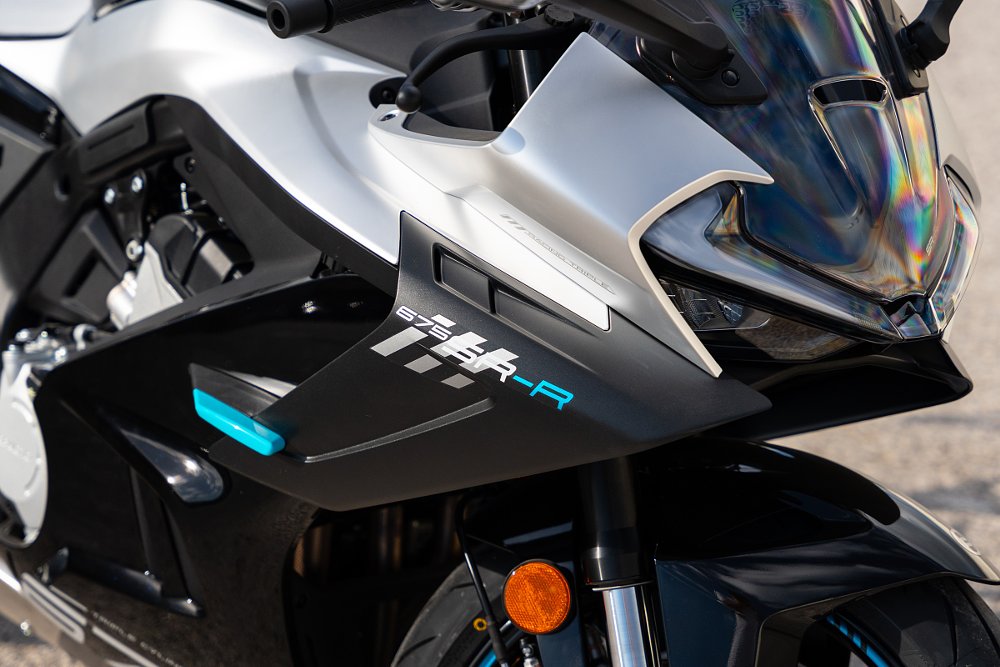
My biggest disappointment has nothing to do with the bike itself. We didn't get to ride the bike on the road and test its street credentials although, in its standard guise, it's certain to perform better on the street than it did on the track. At $7,999, the 675SS's USP has to be its price tag but, in truth, it has the minerals to command a steeper asking price. It's a 2025 motorcycle trapped in an old-school execution and feels more analog than its spec sheet suggests, which is no bad thing. A four-year, unlimited mileage warranty is also available to entice.
There's a stigma attached to buying Chinese vehicles, which is bizarre when you consider just how much Chinese technology we consume. It could be politically challenged views that warp buying opinion or just a preconception surrounding reliability, and the latter wasn't helped by the quickshifters packing up in the rain later in the day. My colleague also ran out of fuel, apparently, despite his fuel gauge displaying a quarter of a tank.
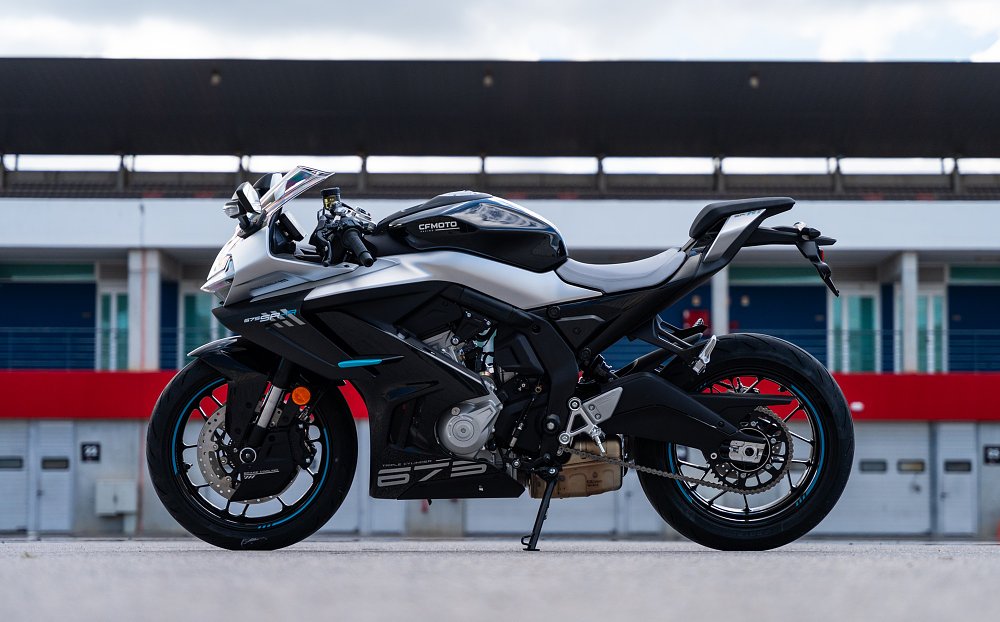
So, undoubtedly still work to be done, yet there are obvious comparisons with the Japanese takeover era in the 1950s and '60s. You can almost smell it coming; an impending assault on the establishment and quality will only improve with time. And the CFMOTO 675SS ain't a bad starting point. Who else is looking forward to the V4 concept becoming reality? I certainly am...
| 2025 CFMOTO 675SS | |
|---|---|
| Price (MSRP) | $7,999 |
| Engine | 675 cc, liquid-cooled, 12-valve, inline triple |
|
Transmission, final drive |
Six-speed, chain |
| Claimed horsepower | 90 @ 11,000 rpm |
| Claimed torque | 50 foot-pounds @ 8,250 rpm |
| Frame | Steel tubular |
| Front suspension | KYB 41 mm inverted fork, adjustable for preload, compression, rebound damping; 5.1 inches of travel |
| Rear suspension | KYB monoshock, adjustable for preload and rebound damping; 5.1 inches of travel |
| Front brake | J.Juan four-piston calipers, 300 mm discs with ABS |
| Rear brake | J.Juan single-piston caliper, 240 mm disc with ABS |
| Rake, trail | 26 degrees, 4.2 inches |
| Wheelbase | 55.1 inches |
| Seat height | 31.9 inches (32.3 or 31.3 with accessory seats) |
| Fuel capacity | 4.0 gallons |
| Tires | CST S3N, 120/70R17 front, 180/55R17 rear |
| Claimed weight (dry) | 386 pounds |
| Available | Now |
| Warranty | 48 months |
| More info | cfmoto.com |




